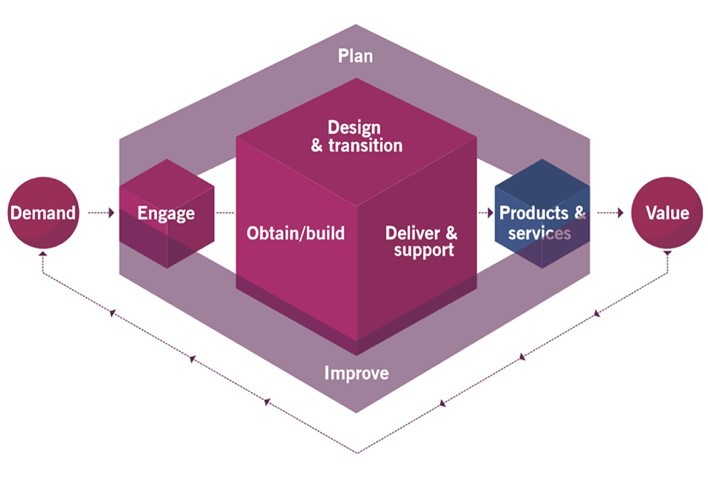I February 2019 the ITIL 4 Foundation Book was released. But what is new? And does it make sense to take the certification?
From my point of view the main advantage of ITIL is still the same: You get a vocabulary that you can use when you work with other people that work with IT. You get best practices and defined roles and responsibilities. We form the world we live in with the words we use, and everything just goes a lot faster if you have a common language. That it is exactly what ITIL offers.
I have taken the ITIL certification three times: In 2006, in 2014 and latest in April 2019. Below I have outlined what I think is the most important news in ITIL 4.
Generally ITIL 4 has tried to incorporate principles from lean and agile methods to reduce costs, maximize delivered value and shorten time to market.
SVS – Service Value System
In 2011 all the processes were placed in the ITIL service lifecycle. In ITIL 4 activities and organisational components are placed in the Service Value System (SVS). It shows how demands from the customers are transformed into value using the service value chain.

Source: AXELOS, ITIL Foundation ITIL 4 Edition (2019)
Value focused
ITIL 4 is value focused. The definition of value is “the perceived benefits, usefulness and importance of something”. Hence different customers have different values from the same output.
Value focused also means that in the continual improvement model you remove activities from the services value chain that do not produce value for the customer. Here you can see lean has inspired ITIL.
The 7 guiding principles
In the top of the SVS you can see “guiding principles”, they are very similar to the agile manifesto from Scrum.. Here are the The 7 guiding principles:
- Start Where You Are
- Keep it Simple and Practical
- Optimize and Automate
- Progress Iteratively with Feedback
- Collaborate and Promote Visibility
- Focus on Value
- Think and Work Holistically
Service value chain
The service value chain figure shows the different types of activities that a demand must go through before it is transformed into value. There are no predefined paths through the value chain, but you normally start engaging with the customer to understand the demand. When the demand is understood you can do the other activity types, and normally you will end up with at product or service that can produce value for the customer.

Source: AXELOS, ITIL Foundation ITIL 4 Edition (2019)
Practices
ITIL 4 defines a lot of different practices. And here you find all the known management processes and functions from the previous ITIL versions. Eg. Incident Management, Service Desk and Change Management. Most of the the practices are active in different service value chain activities.
Summary
As you can see above ITIL 4 introduces some new concepts and focus areas. You could say that ITIL 4 focuses on: understanding the customer, being flexible and only doing what produces value. Hence, no work should be done because it is stated in a process, it should be done because it produces value to the customer.
You still have to keep in mind that ITIL might not be the solution to all your problems. Before you implement any new practices you need to determine what your goal is and decide if you believe that the new practices can help.
Does it make sense to take the certification?
If you work in an environment where ITIL is used or your suppliers or partners use ITIL, I recommend that you take the foundation course, and when you have taken the course you might as well take the exam to get your certification. In the coming years a lot of organizations will try to implement the new concepts in ITIL 4, and it will be good to be able to be one of the first to understand them, and be able to evaluate if they will be valuable to implement them where you work. The more advanced certifications and the books for them are not available at the time of writing (May 2019).